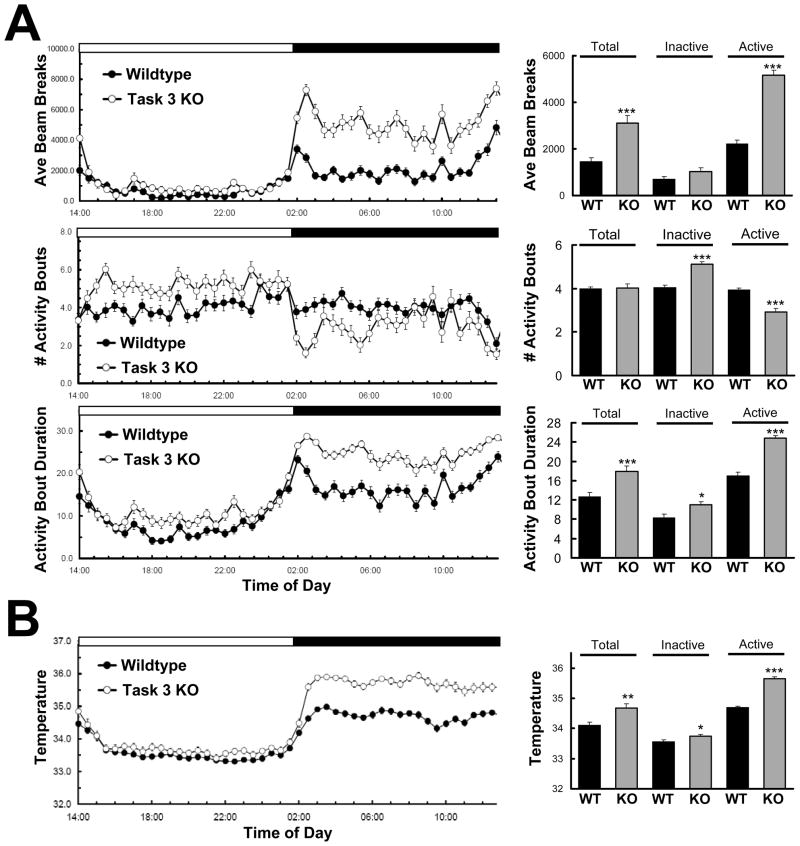Figure 1.
TASK-3 knock-outs display enhanced amplitude in diurnal locomotor activity and temperature. A. Locomotor assessment by infrared beam break of wildtype (filled symbols, n=8) and TASK-3 knock-outs (open symbols, n=8) averaged from 5 days of continuous monitoring under home cage conditions. Average beam breaks as well as the number and duration of activity bouts (± SEM) from 30 minute intervals are plotted over a 24 hour time course (traces, left). Activity bouts are defined as consecutive 30 second scoring epochs in which 5 beams were broken. Lights on occurred at 14:00 and lights off at 02:00 as indicated by open and dark filled horizontal bars above graphs. TASK-3 knock-outs differed from wildtypes in both total beams broken and activity bout duration (2-way ANOVA: F1,3666=162.8, P <0.0001, F1,3666 = 235.28, P <0.0001, respectively), but not in number of beams broken (F1,3666=0.05, P=0.8267). Average beam breaks/30 minute interval are quantified for total 24 hour period, inactive (light) phase only, or active (dark) phase only (bars, right). *, ***, p < 0.05, 0.001, respectively (unpaired t test for repeated measures). B. Subcutaneous temperature of wildtype (filled symbols, n=7) and TASK-3 knock-outs (open symbols, n=8) monitored continuously over 5 days of baseline home cage conditions. Wildtype and mutant animals exhibited significant differences in their time course of temperature variation (traces, left) over 24 hours (F1,3358=37.04, P < 0.0001) and during the active phase (F1,1606=3.04, P < 0.001), but not during the inactive phase (F1,1679=0.71, P<0.8379). Average temperatures also quantified for the total 24 hour period, inactive and active phases (bars, right). *, **, ***, p < 0.05, 0.01, 0.001, respectively (unpaired t test for repeated measures).

